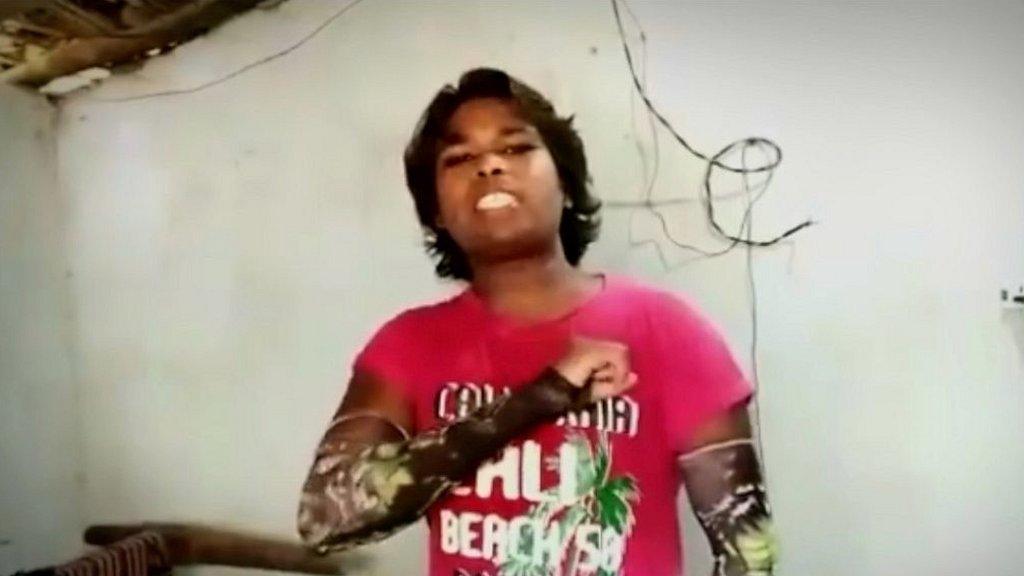The rap stars breaking out of South East Asia
- Published
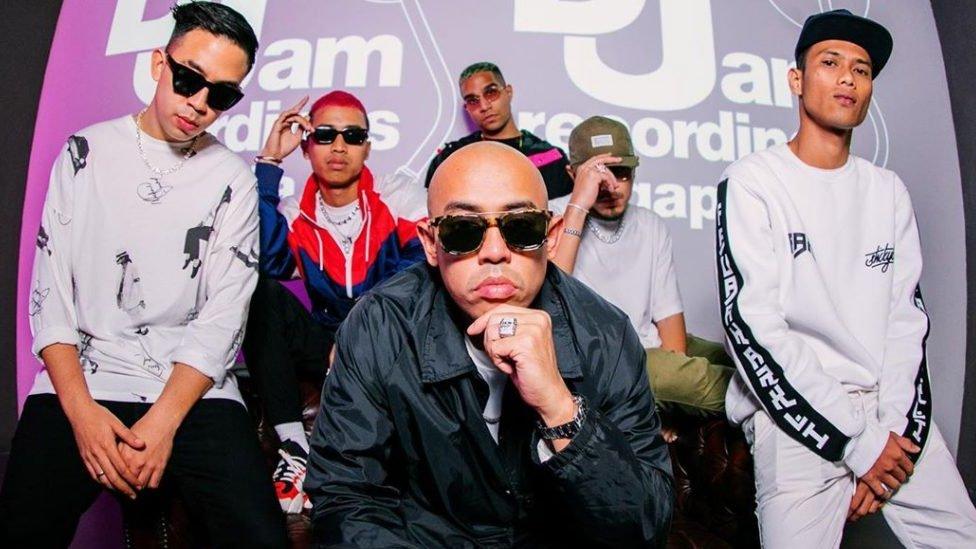
Veteran MC Joe Flizzow (centre) is considered the 'godfather of Malaysian rap'
Since its humble origins in 1970s New York, hip-hop has evolved from a uniquely American phenomenon to a globalised art form.
From the Chinese 'trap' of Higher Brothers to the reggaeton-laced rhymes of Bad Bunny, artists around the world are creating hyper-localised styles of rap based on their respective cultures.
Judging by the meteoric success of grassroots rap stars - Korea's Blackpink sold more than a million albums of their distinctive electro-rap in October alone - listeners can't get enough.
And fans are embracing the genre, even where there is no common language.
"We're at a point where language isn't a barrier anymore," says Jin Hackman, founder of Malaysian hiphop festival Raising The Bar.
"Look at Higher Brothers - they've become a global name using local slang that many Chinese people don't even understand."
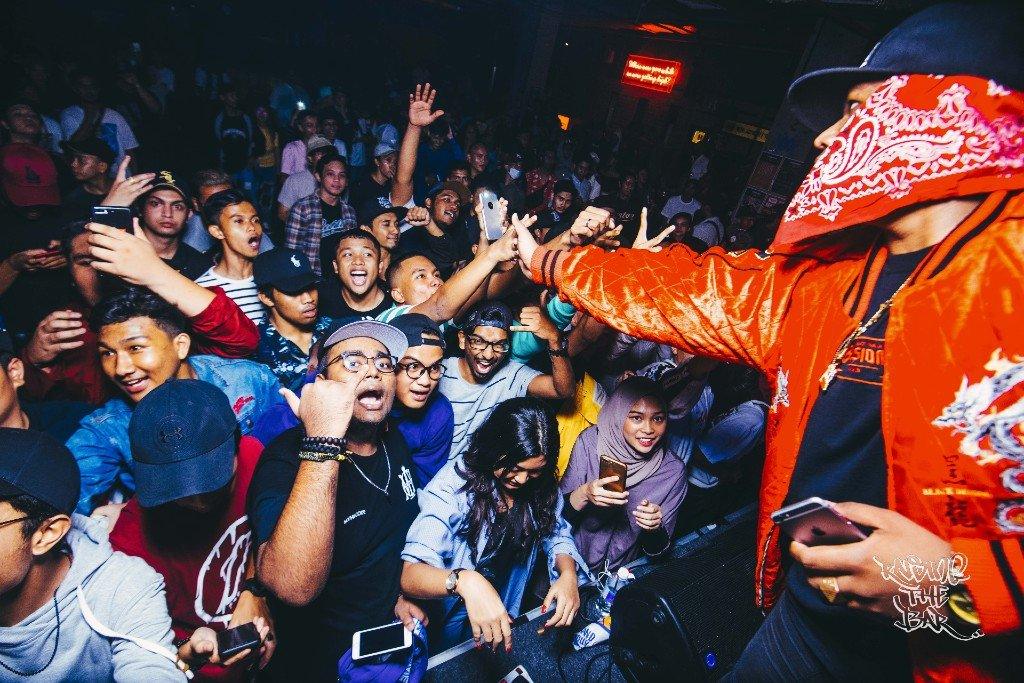
Kuala Lumpur's Raising The Bar festival boasts a stellar line-up of international and homegrown rappers
As the industry looks for diverse talents who boast enough star power to capture the hearts of an increasingly cosmopolitan demographic, South East Asia is fast emerging as a hotspot.
Home to young, multi-racial and multilingual populations, the region has steadily developed an indigenous hip-hop community and the world is finally taking notice.
Universal Music Group, which owns Def Jam Recordings, launched a Southeast Asian division of the pivotal US hip-hop label last year.
Yo! MTV Raps, a cult television show which aired in the US and Europe in the 1990s, also launched an Asian version last year, with its first season focusing on stars from Singapore, Malaysia, South Korea and beyond.
"The talent is out there, the scene just needs support," said Def Jam's Southeast Asia managing director Joe Flizzow, a veteran MC who is considered the 'godfather of Malaysian rap'.
"We want to be pro-active, do events and sign acts at a grassroots level."
So far, the Def Jam label has more than 20 artists from Singapore, Malaysia, Indonesia, Vietnam, Thailand and the Philippines - six of South East Asia's eleven countries.
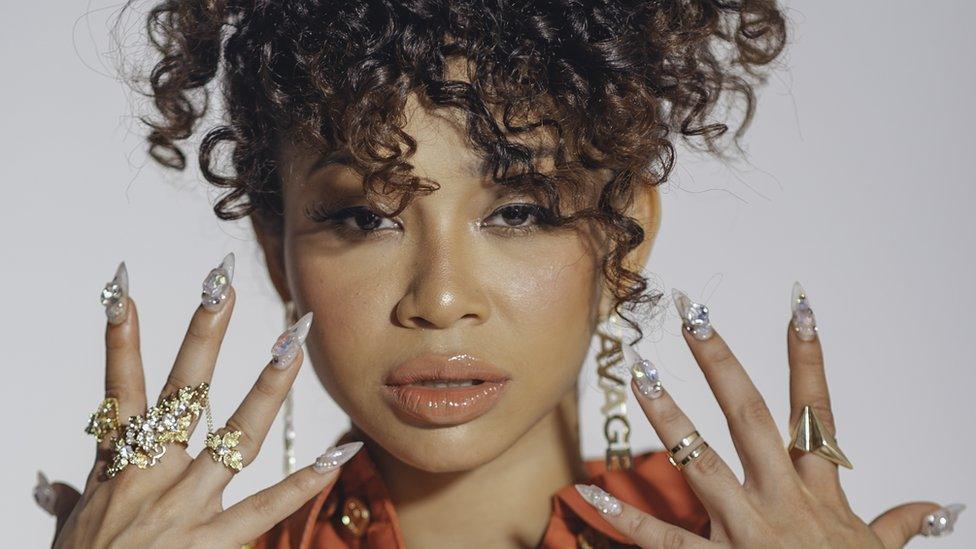
Rapper Zamaera sings in four languages, including her native Malay and English
One of those artists is Singaporean Yung Raja, whose ability to deliver witty verses in both Tamil and English has won over fans across the global Indian diaspora and made him the first Asian artist to have a release on Alamo Records, another heavyweight US label.
"Our focus is to make sure that each and every one of our artists becomes a household name," said Flizzow, who hosts a cypher show, where musicians can informally jam together, at his barbershop in Kuala Lumpur.
Many South East Asian rappers speak several languages, particularly in countries like Malaysia and Singapore where Malay, Mandarin, Tamil and English are all commonly spoken. This bilingual, and even tri-lingual power, allows artists to deliver socially-conscious missives to multiple audiences.
"Speaking to someone in their native language reaches their hearts and souls - to me, that's what music is supposed to do," says 25-year-old Malaysian rapper Zamaera, who switched between four languages on a track this year.
Allow YouTube content?
This article contains content provided by Google YouTube. We ask for your permission before anything is loaded, as they may be using cookies and other technologies. You may want to read Google’s cookie policy, external and privacy policy, external before accepting. To view this content choose ‘accept and continue’.
(This video contains language some viewers may find offensive.)

Most of her poetic renditions are in Malay and English, as she explores the struggles of being a woman in a patriarchal industry, taking on issues such as female empowerment and gender inequality.
"I want to tell Malaysian women that we will always have to stand up for ourselves," she told the BBC.
"It's not a surprise that women in Malaysia are not treated with the same amount of respect as men, but we can't keep quiet about it and we always need to have each other's backs."
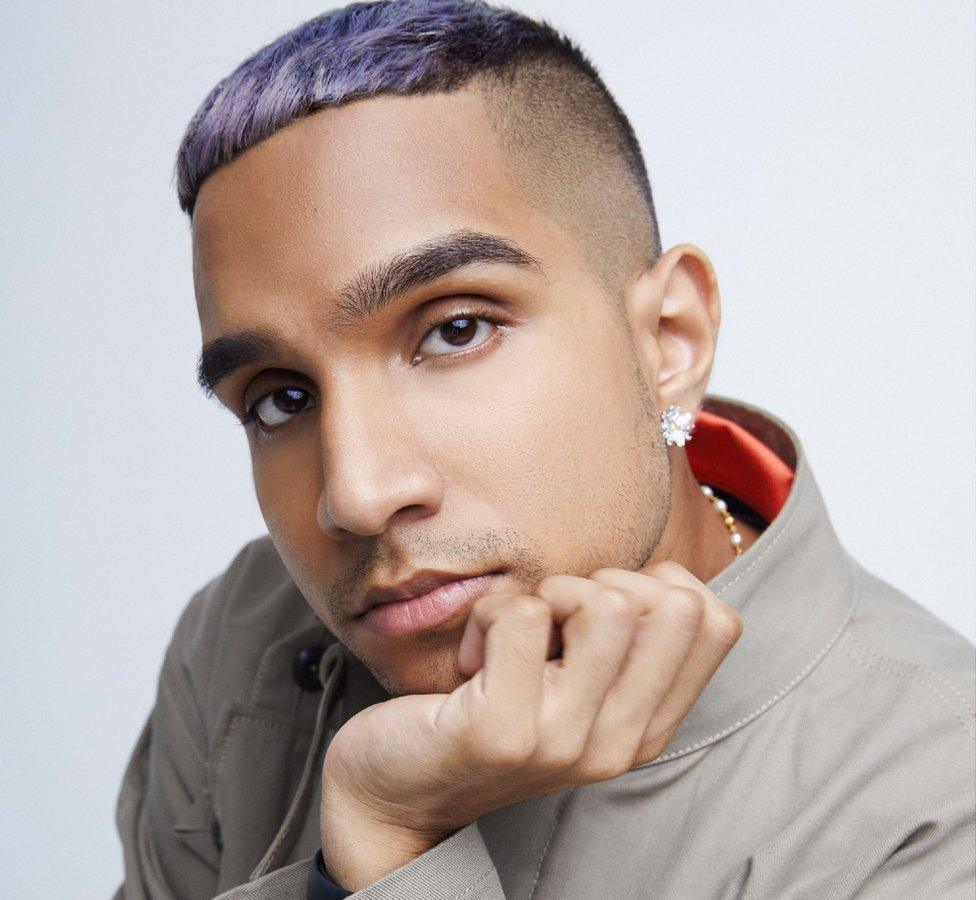
Avant-garde, bilingual rapper Yung Raja has been tipped for international success
For 24-year-old Yung Raja, choosing which verses to deliver in Tamil instead of English boils down to "which of the two languages serves my lyrics in a way that drives the message harder," he explains.
Channelling a happy-go-lucky vibe similar to Californian soul star Anderson Paak, Raja's work is light-hearted in nature - but even his uplifting phrases feel more potent in Tamil thanks to the language's rhythmic tempo and innate melody.
The Tamil language is "rich and filled with wisdom," says Raja, adding that composing verses is fun because of "the syllables, the sound of the words, and the inclusion of modern-day expressions of what's now dubbed Tanglish".
"The cadences that can be formed are so exciting for me," says Raja.
Allow YouTube content?
This article contains content provided by Google YouTube. We ask for your permission before anything is loaded, as they may be using cookies and other technologies. You may want to read Google’s cookie policy, external and privacy policy, external before accepting. To view this content choose ‘accept and continue’.
By elevating Tamil rap from the underground to the mainstream, Raja and his predecessors, such as Malaysian trailblazer Yogi B, are bringing attention to a minority community. In both Malaysia and Singapore, Tamil people make up less than 10% of the population and have long faced systematic marginalisation.
As powerful as lyrics and language can be, they don't define an artist. Style and technique are the most crucial criteria for an MC, especially now that streaming platforms have given increased public exposure to niche forms of hip-hop that go beyond the classic tropes of gangster rap and boom-bap.
'Next big thing'
Since each Asian market operates on their own trends, there's no "one size fits all" approach when it comes to commercial success.
"The Philippines has a rich history of battle rap, which is very heavy on lyrics, so when a mumble rapper comes to the scene, not everyone is going to understand that, but it still creates a conversation," explains Flizzow.
Flizzow believes the Philippines will eventually produce the next breakout star: "Just like it's a matter of time until there's a Filipino player in the NBA, I feel it's just a matter of time until a Filipino rapper becomes one of the best in the region - because the talent is there."
For South East Asian rap to go global, experts agree that more alliances with overseas labels, brand agencies and distributors are needed.
Collaborations between rappers from different countries can also widen a region's footprint, notes Hackman, citing pairings like that of Thai rap group Thaitanium, whose single with Snoop Dogg debuted in the US in 2014 and was followed up with a mini-tour of a few American cities.
But until the music industry can recover from the effects of the pandemic, businesses are focusing their attention on nurturing talent: "We got to be humble, we got to keep our ears to the ground and spot the next big thing," says Flizzow.
- Published30 September 2020
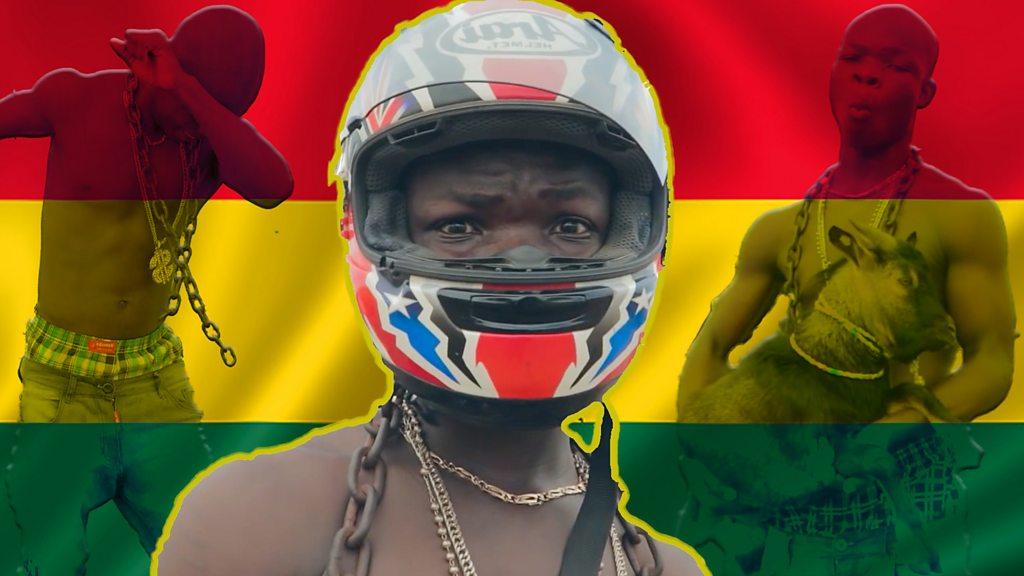
- Published13 August 2020
